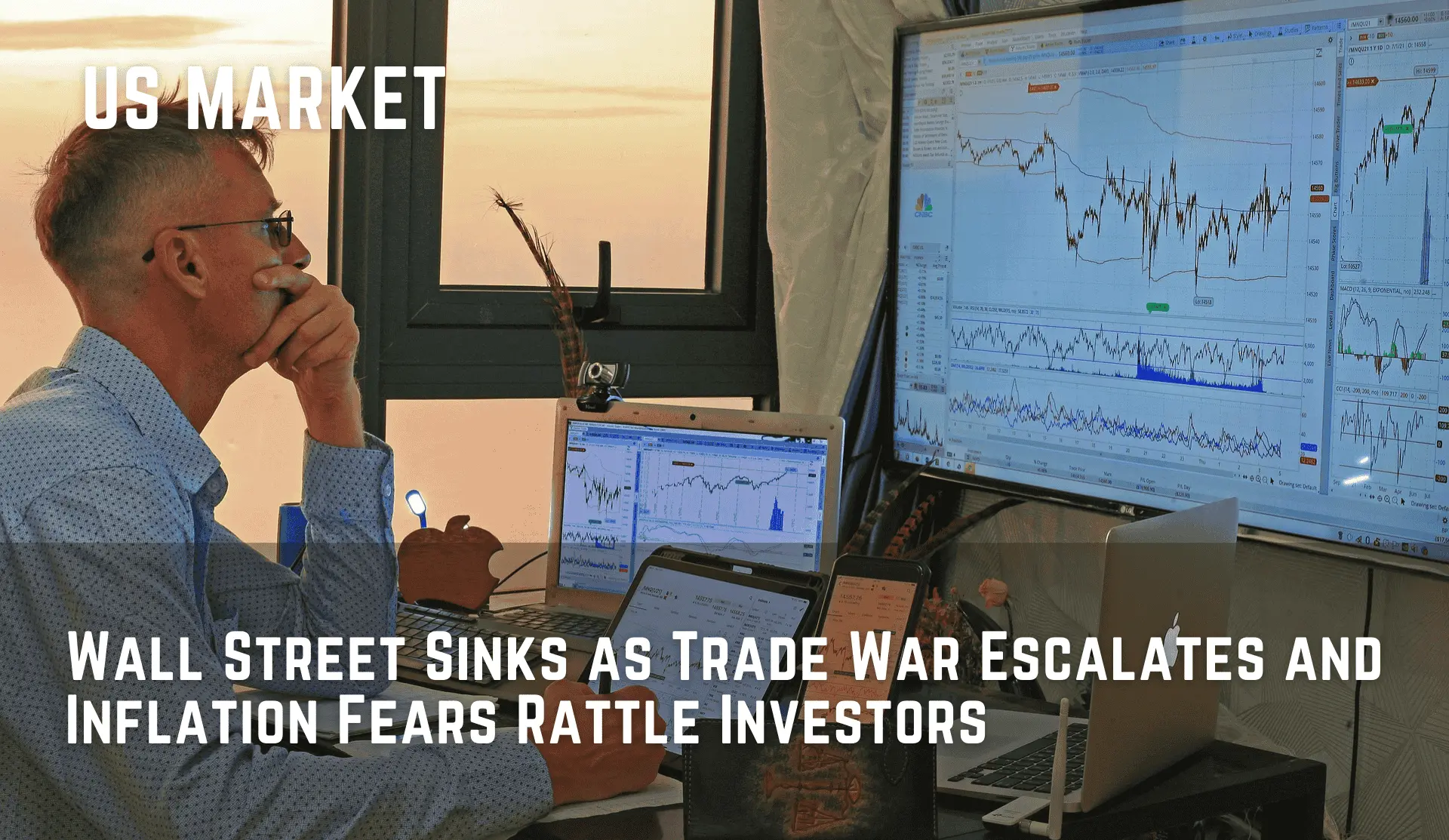
Wall Street’s roller-coaster week came to a turbulent close on Friday as intensifying trade tensions between the U.S. and China, hawkish signals from the Federal Reserve, and falling consumer sentiment rattled investor confidence and sent major indices lower.
The Dow Jones Industrial Average closed down 305 points, or 0.8%, while the S&P 500 fell 0.7%, and the Nasdaq Composite dipped 0.5%. The sell-off came despite strong earnings from major U.S. banks, as geopolitical uncertainty and rising bond yields overshadowed corporate performance.
Beijing’s decision to raise tariffs on U.S. imports from 84% to 125%, effective April 12, marked a significant escalation in the ongoing trade war. The move came in direct response to President Donald Trump’s earlier announcement of 145% reciprocal tariffs on Chinese goods, shaking investor optimism following a short-lived 90-day tariff pause.
China’s commerce ministry, in a sharply worded statement, signaled it would “fight to the end” if Washington continued its tariff aggression. The tit-for-tat rhetoric is feeding fears of a prolonged standoff, unsettling markets already on edge.
Adding fuel to the fire, the University of Michigan’s consumer sentiment index fell to 50.8 in April — the lowest reading since 2022. More alarming was the surge in inflation expectations: Americans now expect 6.7% inflation over the next year, the highest since 1981.
As everyday Americans grapple with rising costs and economic uncertainty, retail bellwethers are feeling the pinch. Target CEO Brian Cornell noted a pullback in discretionary spending, echoing concerns of a cautious consumer heading into mid-2025.
Despite the chaos, JPMorgan Chase, Morgan Stanley, and BlackRock delivered earnings beats. JPMorgan reported revenue of $46.01 billion, exceeding estimates and marking a record quarter for its stock traders. However, CEO Jamie Dimon struck a cautious tone:
“The economy is facing considerable turbulence… tariffs, sticky inflation, and high fiscal deficits all add to the uncertainty.”
Wells Fargo fell short on net interest income, and despite trimming costs, the bank left its full-year guidance unchanged, citing difficulty forecasting amid tariff uncertainty.
U.S. Treasury yields surged, with the 10-year yield jumping to 4.53%, its highest level since February, while the 30-year yield spiked to 4.93%, capping one of the most volatile weeks in the bond market since 1982.
The U.S. dollar, another casualty of policy chaos, fell 1.5% against the yen, touching its lowest level in seven months. Meanwhile, gold surged to a new record, reaffirming its safe-haven status amid global uncertainty.
The CBOE Volatility Index (VIX) hovered near 44, underscoring the market’s deepening unease. “This week’s events likely eroded Trump’s credibility with the financial community,” wrote Barclays strategist Emmanuel Cau. “Markets may have found a floor, but the ceiling is capped until clarity returns.”
Markets oscillated violently all week:
Wednesday: The S&P 500 soared 9.52% on news of Trump’s tariff pause
Thursday: Gains were erased as fresh tariffs and inflation fears returned
Friday: Sentiment soured again, with indices whipsawing before closing in the red
Still, the S&P 500 ended the week up 3.3%, its best weekly performance since November. The Nasdaq gained nearly 5%, and the Dow advanced 2.7% — a reminder of the market’s resilience, even in the eye of the storm.
With rate cuts likely off the table for now — Boston Fed President Susan Collins said it may be appropriate to “hold longer” — markets are bracing for a prolonged period of high uncertainty. BlackRock CEO Larry Fink warned,
“We’re very close, if not already in, a recession.”
As traders look ahead to next week, all eyes will remain on inflation data, earnings season, and any signs of a thaw in U.S.-China trade tensions. For now, investors may need to buckle up — the storm isn’t over yet.
Disclaimer - Skrill Network is designed solely for educational and informational use. The content on this website should not be considered as investment advice or a directive. Before making any investment choices, it is crucial to carry out your own research, taking into account your individual investment objectives and personal situation. If you're considering investment decisions influenced by the information on this website, you should either seek independent financial counsel from a qualified expert or independently verify and research the information.
Tags:
RECENT POSTS
TAGS
Subscribe to the Skrill Network Newsletter today and stay informed
Recommended Articles